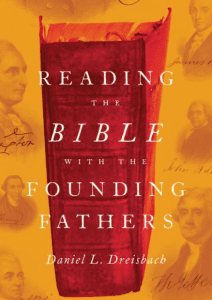 Several weeks ago I put up a post That “Women” Question looking at comments by N. T. Wright on the text of 1 Timothy 2 and the role of women in the church. Wright’s response referred to his small commentary Paul for Everyone, The Pastoral Epistles where he provides a translation of verses 11-15 and a discussion of the context. Wright’s approach is similar to the arguments developed by Scot in his book The Blue Parakeet.
Several weeks ago I put up a post That “Women” Question looking at comments by N. T. Wright on the text of 1 Timothy 2 and the role of women in the church. Wright’s response referred to his small commentary Paul for Everyone, The Pastoral Epistles where he provides a translation of verses 11-15 and a discussion of the context. Wright’s approach is similar to the arguments developed by Scot in his book The Blue Parakeet.
Today I would like to outline Wright’s arguments on 1 Timothy 2, and on the other “problem” passage 1 Corinthians 14:34-35 with some reference to The Blue Parakeet as well. I’ll come back with some of my own comments and thoughts in a later post.
The NIV translates 1 Timothy 2:11-15:
A woman should learn in quietness and full submission. I do not permit a woman to teach or to assume authority over a man; she must be quiet. For Adam was formed first, then Eve. And Adam was not the one deceived; it was the woman who was deceived and became a sinner. But women will be saved through childbearing—if they continue in faith, love and holiness with propriety.
Wright translates the passage with a significantly different twist:
They must be allowed to study undisturbed, in full submission to God. I’m not saying that women should teach men, or try to dictate to them; rather, that they should be left undisturbed. Adam was created first, you see, and then Eve; and Adam was not deceived, but the woman was deceived and fell into trespass. She will, however, be kept safe through the process of childbirth, if she continues in faith, love and holiness with prudence. (p. 21-22)
While many assume that the instruction to learn in quietness and full submission refers (of course) to submission to male teachers, Wright suggests that the submission is instead an attitude of submission as learners to God.
The next verse Wright, along with Scot in the The Blue Parakeet and a number of others, takes as a reference to the specific cultural context of Ephesus where women were the active as priests and religious leaders in the Temple of Artemis. The word behind “assume authority over” in the NIV or “try to dictate to” is an unusual word according to Wright. The dictionary I have provides definitions such as “an absolute master”or “to govern, exercise dominion over one.” Clearly there is no biblical warrant for women (or men for that matter) to act as absolute masters exercising dominion over others within the church. The language of the New Testament is permeated with mutual submission, love, cajoling, and convincing. The strong language, when it occurs, is directed towards those who in some fashion fail to act in love, instead abusing others.
So why the reference to Adam and Eve? Scot suggests that the reference is to a context in Ephesus where it was suggested that women are naturally superior to men. Paul, consistent with the rest of the New Testament was denying this – women are not superior or inferior to men. This is an interesting idea as there is certainly a “feminist” strand in our culture that makes the same kind of claim concerning the superiority of women. Wright doesn’t take this tack, but gives a different possibility. The reference to Adam and Eve doesn’t point to the weakness of Eve or the superiority of Adam, but to the need for education, study, and submission to God. Eve was deceived because she hadn’t been taught. Adam on the other hand sinned deliberately, disobeying the direct command from God.
Wright concludes his commentary on this passage:
Let’s not leave any more unexploded bombs and mines around for people to blow their minds with. Let’s read this text as I believe it was intended, as a way of building up God’s church, men and women, women and men alike. Just as Paul was concerned to apply this in one particular situation, so we must think and pray carefully about where our own cultures, prejudices and angers are taking us. We must do our best to conform not to any of the different stereotypes the world offers, but to the healing, liberating, humanizing message of the gospel of Jesus. (p. 27)
The other significant text is 1 Corinthians 14:34-35. Frankly I don’t worry much about this passage because I think the textual evidence that this is a later addition is compelling. As a result I think that these verses should be treated the way we treat the long ending of Mark or the the story of the woman caught in adultery. The value should be judged by conformity with the rest of scripture, especially the rest of the letter to the Corinthians and Paul’s practices. However, Wright (Paul for Everyone: 1 Corinthians) is not convinced the passage is a later addition, (for good reasons I might add) and discusses it at length. His translation of this passage doesn’t have the twist that his translation of 1 Timothy has. In fact it seems rather traditional, quite similar to the NIV (although substituting the word assemblies for churches). But Wright emphasizes that we need to look at the overall cultural and biblical context, and this context shapes his interpretation.
He [Paul] clearly doesn’t mean that no women must speak during worship. As we saw, chapter 11 assumes that women will take leadership roles in praying and ‘prophesying’ just as much as men will. And I simply don’t think Paul has any agenda about keeping women in a downtrodden condition, as has often been suggested. What we have to reckon with is a possible scenario, or a set of possible scenarios, that might explain the sudden need for a commandment of this type. (p. 198-199)
The letters of Paul were written to particular audiences in particular times and places. While the theology and much of the instruction is timeless, we have to remember that we are only getting part of the picture from the letter itself. What is off-stage for us may change the true meaning of a passage. Wright goes on to list a couple of potential scenarios that could shape the way that this command came about and concludes:
Either of these may describe the situation Paul faced; or there may have been another possibility. We don’t know. What is clear is that this is a particular problem posed from within the cultural setting of the time, and that Paul’s overriding concern (if the passage is indeed written by him) is for order, peace and mutual upbuilding when the congregation comes together for worship, rather than for chaos, interruption and dissension. (p. 200)
Scot suggests a slightly different take on this passage in The Blue Parakeet, but one that is consistent with the spirit of Wright’s suggestions. Both agree that context is the key to understanding the passage – both context in scripture, including the roles that women play in other passages, and the cultural context into which the letter was written.
The third option comes from Craig Keener, an expert scholar on the historical background to the New Testament, who keenly observes that Paul’s own words clarifies this best. Paul silences women in regard to asking questions: “If they want to inquire about something, they should ask their own husbands [if they are married] at home; for it is disgraceful for a woman to speak [inquire about something they don’t yet understand] in the church.” I think Keener gets this one right.
Why would Paul restrict the asking of questions? The best answer to this question is because these women were not yet educated theologically or biblically as well as the men. (That’s another discussion.) When these women heard what was being said, they had questions. Paul thinks those sorts of questions should be asked elsewhere, probably because it interrupted the service. This conclusion has significant implications. Paul’s silencing of women at Corinth is then only a temporary silencing. Once the women with questions had been educated, they would be permitted then to ask questions in the gatherings of Christians. (p. 193)
The emphasis here on education is consistent with the interpretation of 1 Timothy 2 given by Wright, where the issue is not women as teachers but the need for adequate preparation and study before anyone begins to teach or speak out publicly.
I’ll come back with some of my own thoughts on these passages and the issues they raise in our culture today in a future post. This is plenty of food for thought and for conversation.
What do you think of these interpretations?
How would you determine if an interpretation is “wishful thinking” or legitimate?
It strikes me as interesting that so many embrace the interpretation that men are the naturally superior leaders and teachers without much reflection, but consider a view of complementarity without hierarchy or rigid role separation a”stretch”.
Where does the burden of proof lie? Why?
If you wish to contact me directly you may do so at rjs4mail[at]att.net
If interested you can subscribe to a full text feed of my posts at Musings on Science and Theology.











